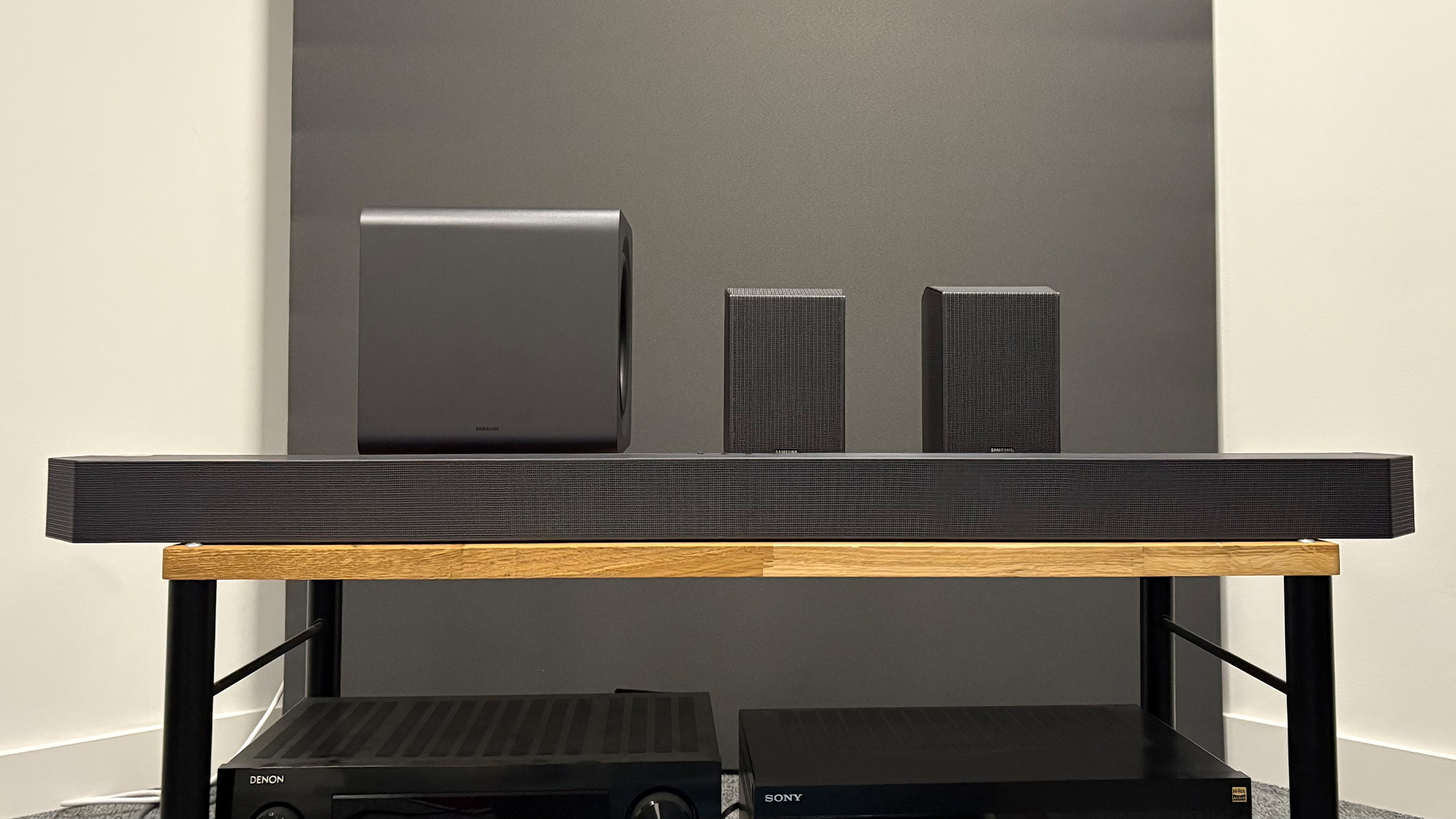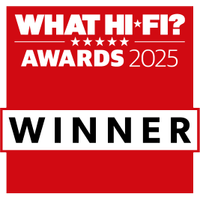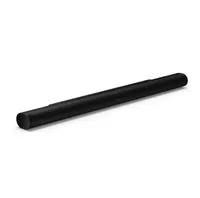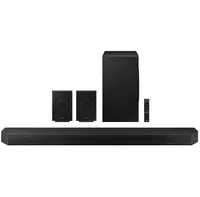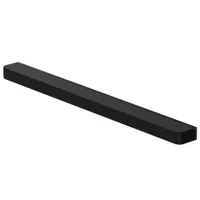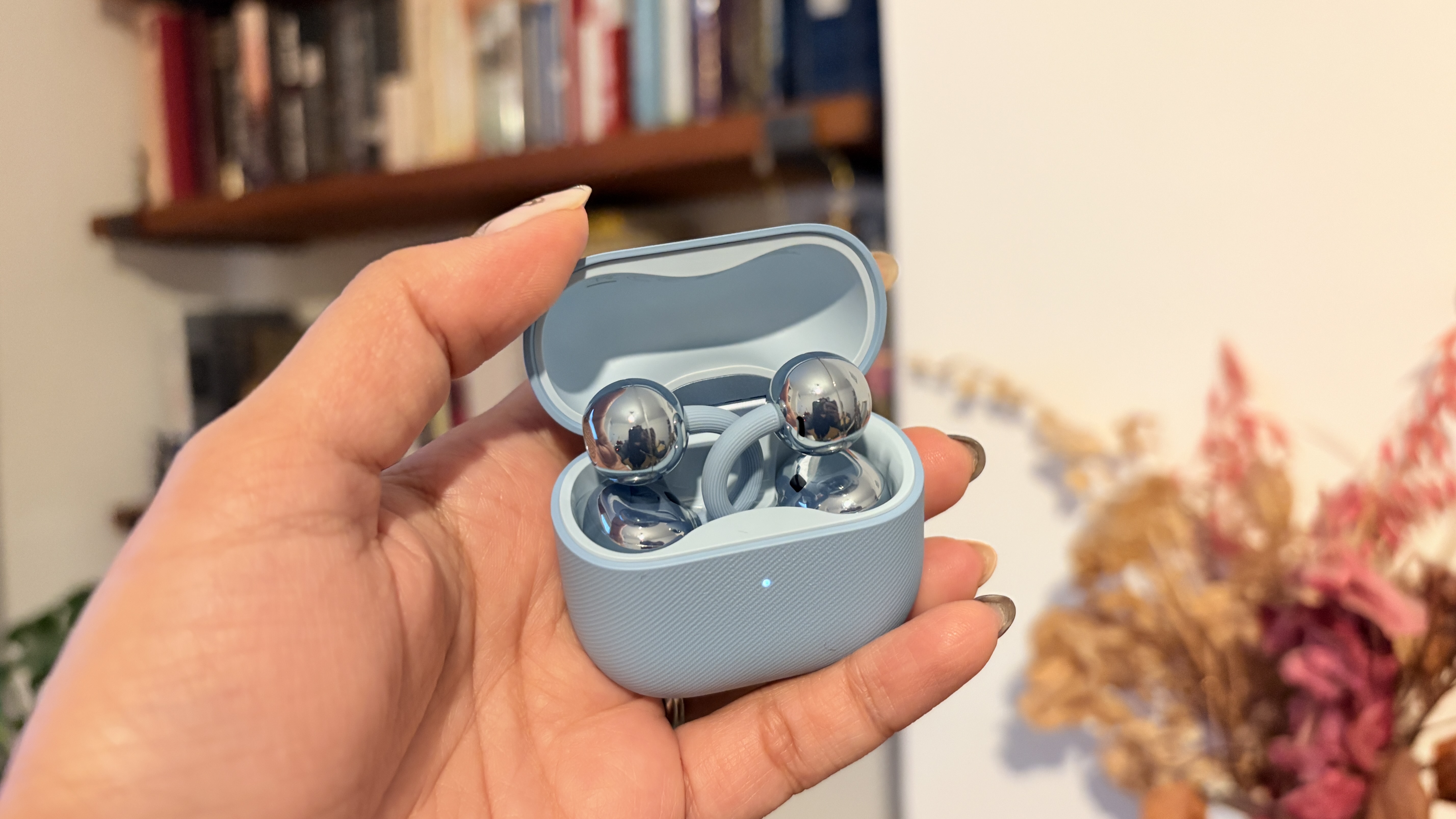What Hi-Fi? Verdict
The best Dolby Atmos soundbar system just got better – the Samsung HW-Q990F nails it with a crisp and engaging sound and a whole new level of bass performance
Pros
- +
Clear, detailed and dynamic sound
- +
Rich, controlled and tonally varied bass
- +
Easy set-up with excellent connectivity
Cons
- -
Design is starting to look a little bit dated
- -
Dot matrix display is hard to read
Why you can trust What Hi-Fi?
Home cinema speaker systems are our preferred method of achieving immersive cinematic sound. We’re willing to admit, though, that they are, frankly speaking, a bit of a hassle to set up and live with.
We wouldn’t blame anyone for not wanting to traipse cables around their living room, or have floorstanding speakers take up precious space – so what’s the alternative?
The wireless soundbar surround-sound system, of course! This genre of easy-to-use sound systems has been steadily growing in popularity, with more and more manufacturers adding wireless surround speakers and a subwoofer to their Dolby Atmos soundbars.
When it comes to nailing the concept, we have to give Samsung some kudos, as last year’s HW-Q990D was an absolute doozy. This all-in-one surround sound solution skyrocketed its way into the Product of the Year slot, as it delivered grade-A audio performance in an easy-to-use, fuss-free package.
So, when the Korean tech goliath announced the newest version of this neat concept, we were immediately intrigued. Enter the HW-Q990F, a soundbar package that, on the surface, doesn’t look a whole lot different from its predecessor.
In fact, the spotlight seems to be placed mostly on an adorable new subwoofer, but don’t be fooled by its cute cubic chassis, as it packs an almighty punch that takes this already superb soundbar system into a whole new league.
16/07/2025: Added a new also consider section with details on rival products as well as an FAQ section.
Price
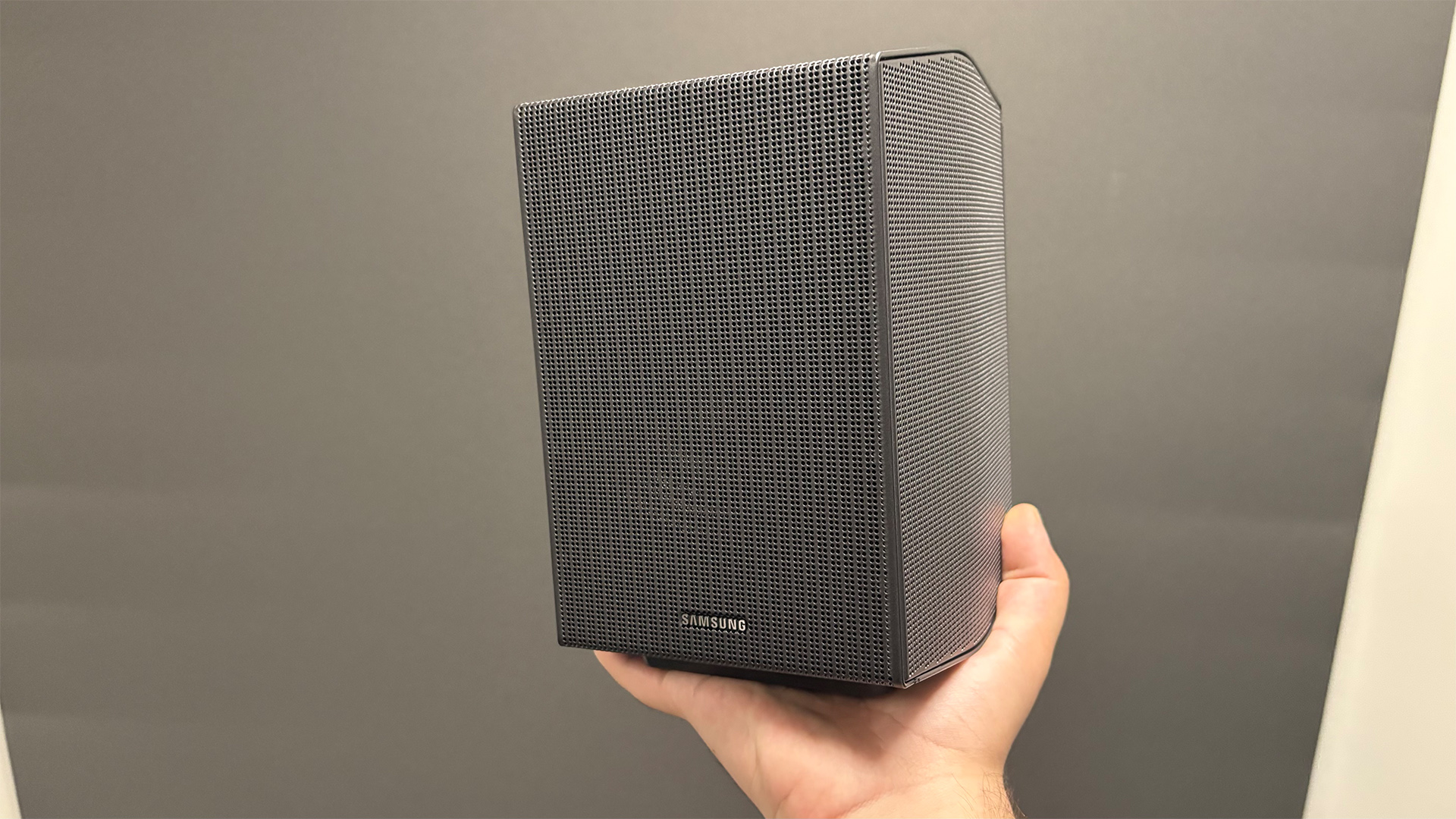
The Samsung HW-Q990F is officially priced at £1699 / $1999 / AU$1999. That’s the same price as its predecessor in the UK and Australia, though the US has been subjected to a $400 price increase.
The latest hi-fi, home cinema and tech news, reviews, buying advice and deals, direct to your inbox.
That being said, we’re already seeing discounts that bring it down to $1600. That’s still $200 more than its predecessor’s launch price in the States, but it's a start.
Therein lies a wider issue; the HW-Q990D is still available at a wide selection of retailers, and it can be snapped up for around half the price of the new model.
The good news is that the 2024 model has seen some truly aggressive discounts throughout its lifespan, so we expect to see some equally good deals eventually come to the HW-Q990F.
Largely speaking, Samsung is its own biggest competitor in this sector, as LG’s equivalent package scored an underwhelming three stars in our review, so we can’t really recommend it as an alternative.
There is the Sonos Arc Ultra Immersive Set, which combines the power of the Sonos Arc Ultra (five stars) with a pair of Era 300 speakers (Award-winners), but you’re looking at £2969 / $2969 / AU$4596 for that package – and even more if you also want to add a sub.
Build
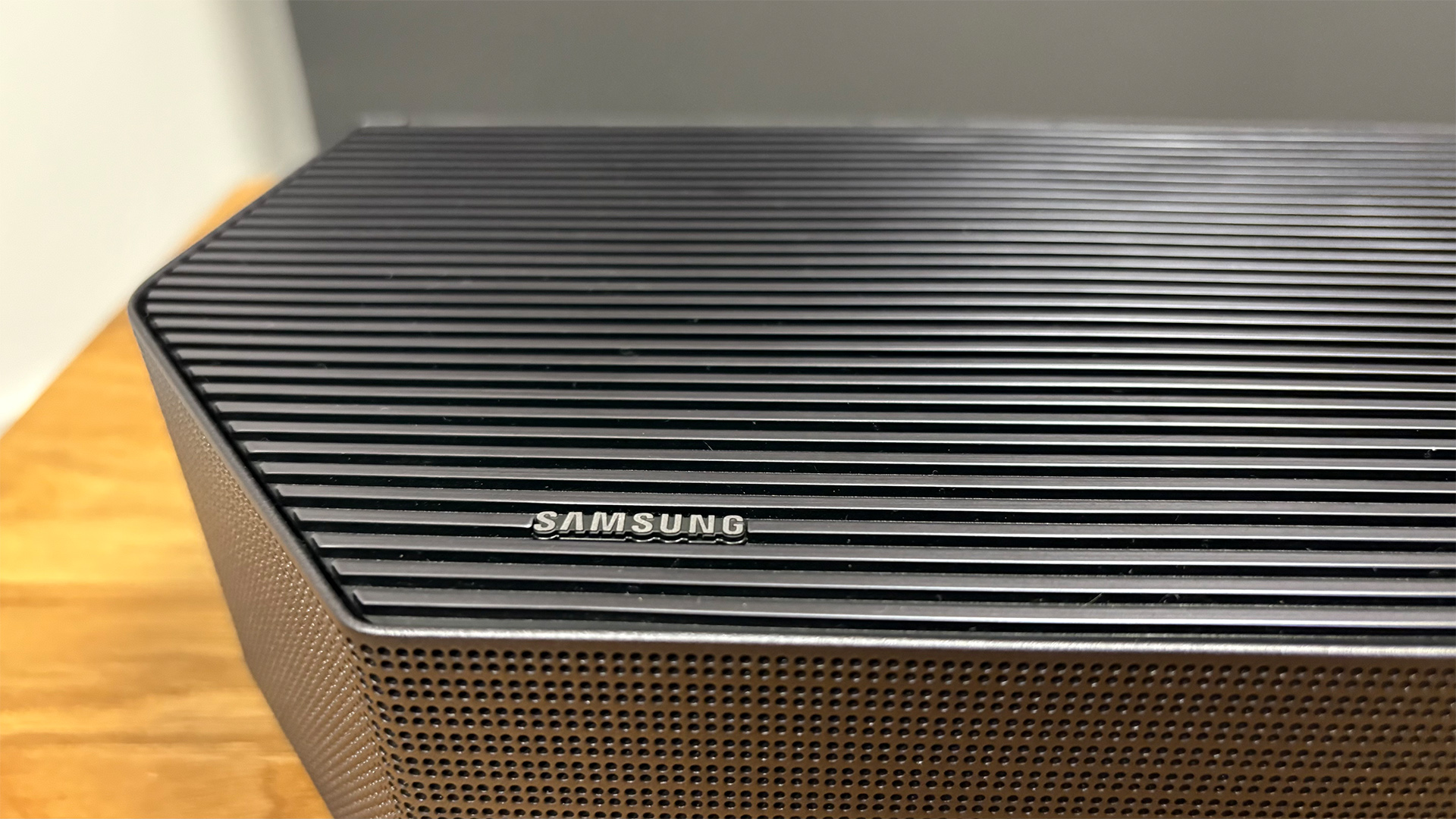
If there is one area where we’d like to see Samsung change things up with this concept, it's the design. Most of the elements of the Q990F package look very similar to the Q990D, which in turn looked very similar to the Q990C.
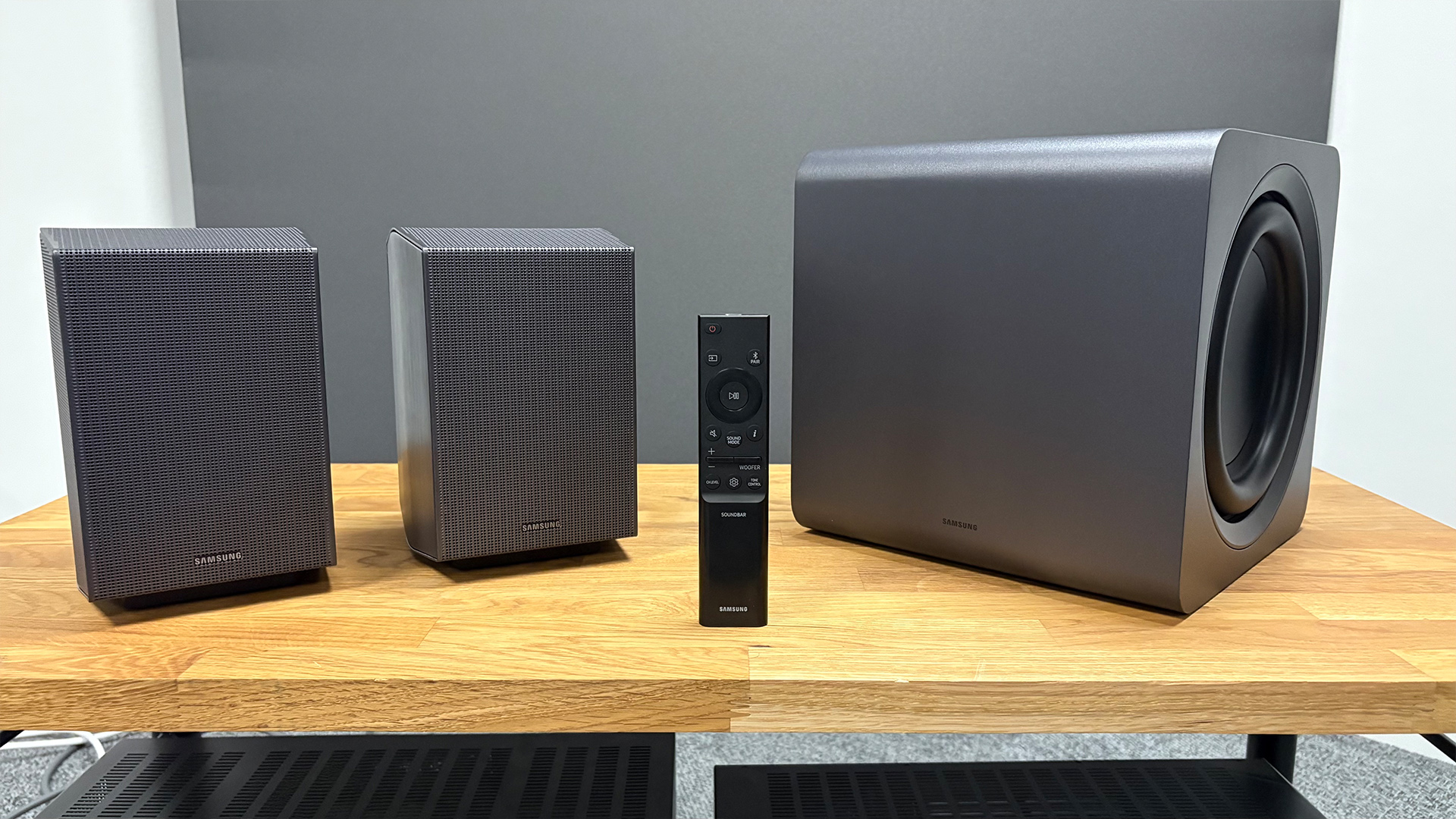
Connectivity HDMI out (eARC), 2 x HDMI 2.1 in, optical, wi-fi, Bluetooth 5.0, AirPlay 2
Format support Dolby Atmos, Dolby TrueHD, Dolby Digital Plus, DTS:X
Streaming Tidal Connect, Spotify Connect, Amazon Music, Deezer
Voice control Amazon Alexa
Soundbar dimensions (hwd) 7 x 123 x 14cm
Soundbar weight 7.3kg
Surround speaker dimensions (hwd) 20 x 13 x 14 cm
Surround speaker weight 3.4kg
Subwoofer dimensions (hwd) 25 x 25 x 25cm
The bar itself is an angular hexagonal shape measuring 7 x 123 x 14cm (hwd), with a lined pattern running the length of the top panel. You’ll find a selection of buttons on top to change source, mute the onboard microphones and adjust the volume, with a simplistic dot matrix display on the front displaying corresponding information.
Samsung bundles a simplistic remote with functions to change the input, sound mode and EQ for the system, as well as adjusting the subwoofer level and enabling or disabling the SpaceFit Sound feature.
The surround speakers are also the same boxy, angular design as found with the 2024 model, including the handy cable guide on the bottom edge. They also carry identical dimensions to the 2024 versions, measuring 20 x 13 x 14cm.
Where this version truly differs from its predecessor is with the included subwoofer. Samsung has swapped from a tall, narrow cuboid sub to a much more compact, rounded-cube subwoofer. Side by side, the old subwoofer absolutely dwarfs the new model, with its dimensions of 25 x 25 x 25cm (hwd).
Features

We can’t really find fault with the HW-Q990F’s feature set. It’s an 11.1.4 system with 23 drivers across the bar, surrounds and sub. That’s 15 drivers in the main soundbar, three drivers in each of the surround-sound units, and dual 20cm force-cancelling drivers in the subwoofer, which features a claimed 300W power output.
The soundbar and surrounds feature upward-firing drivers for Dolby Atmos height effects (DTS:X is also supported). Samsung recommends placing the rear surround speakers at a 135-150-degree angle behind the listening position, though the system will compensate if you opt to place them in a different position.
Interestingly, the Smart Things app, which can be used to control a variety of functions on the soundbar, has an option to reconfigure the system with the surround speakers at the front to work in tandem with the soundbar. We strongly recommend placing them in the intended rear position for the best surround-sound experience, though.
Speaking of the Smart Things app, we deem it to be a solid, and in many cases, the preferred method of interacting with the bar. The included remote has plenty of useful buttons, including a dedicated rocker to increase or decrease the subwoofer level, but the simplistic dot matrix display on the front of the soundbar is often hard to interpret.
The wireless surrounds and subwoofer connect to the bar seamlessly with an easy pairing process, and once they’re in position, you shouldn’t need to adjust anything. Samsung kindly provides different-length cables in the box, despite all components of the system using the same connection for power. It’s worth saving the longest leads for the surround speakers as this allows for greater flexibility during set-up.
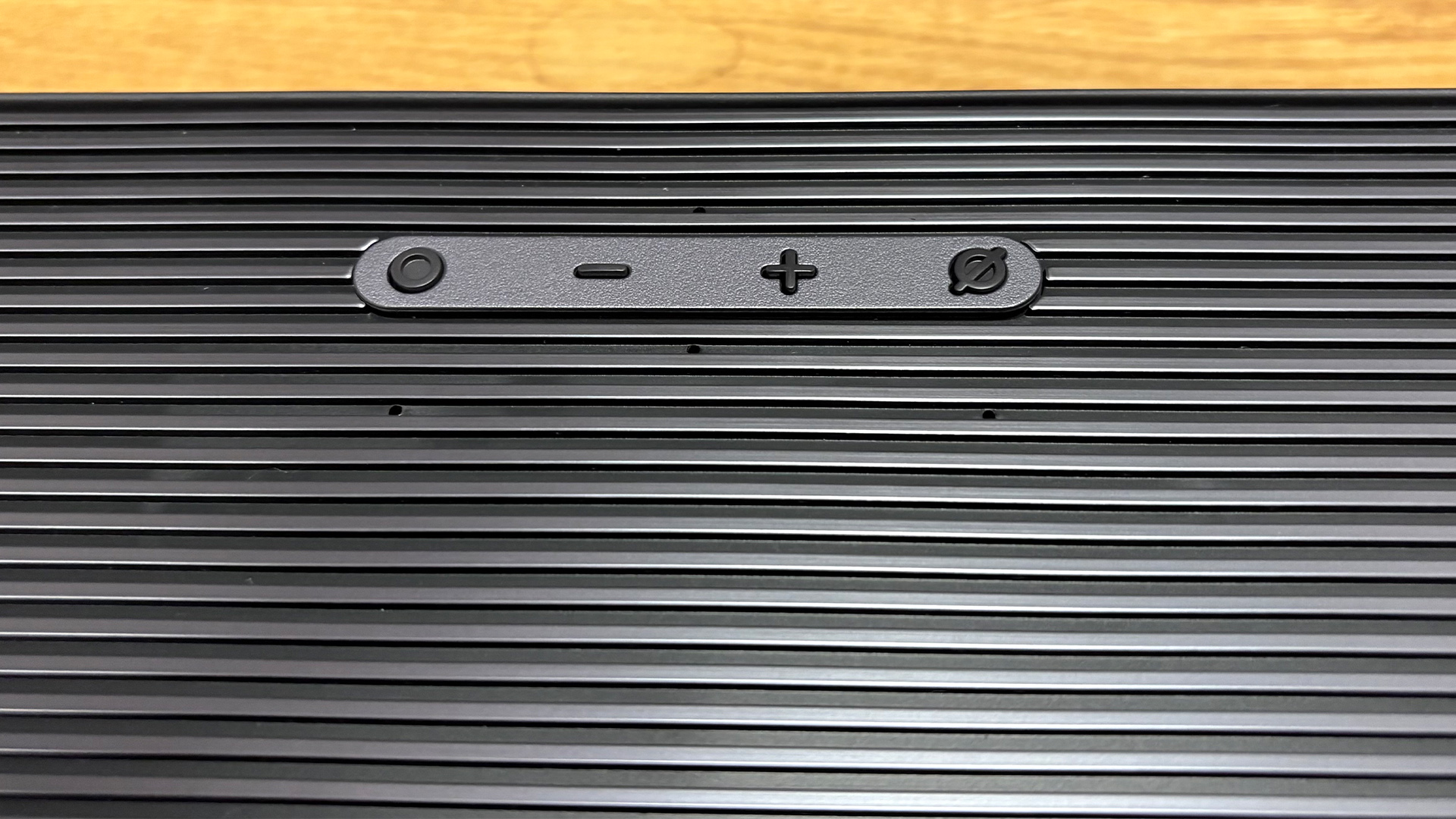
Samsung has, unsurprisingly, imbued the Q990F with a hearty helping of its proprietary functions and technology.
SpaceFit Sound Pro returns, which utilises the built-in microphones to constantly monitor and adjust the soundbar and subwoofer to accommodate your viewing space. It’s an optional feature, but we find it to work rather well and see no reason not to switch it on.
Q Symphony is also on board, allowing Samsung TV users to utilise the speakers in their TV alongside the soundbar system, using the power of AI to synchronise the sound. Your mileage with this feature will vary depending on the Samsung TV you pair it with, though we often find that the different drivers within the TV don’t always gel well with the rest of the system; especially considering that the Q990F features excellent tonal balance between its components (more on this later).
There are a handful of Samsung-specific sound processing modes too, many of which can also be found on Samsung TVs – who doesn’t love a bit of synergy? Active Voice Amplifier Pro, which is an AI-backed dialogue enhancement sound mode that can adapt to ambient noise levels in your viewing space, is on board.
Private Listening mode, on the other hand, disables the soundbar and subwoofer and instead relies on the surround speakers to direct sound to your specific listening position. This is an interesting alternative to the sort of Night mode that is found on many sound systems.
There is also a Moderate Bass setting, which disables the subwoofer to allow the soundbar to handle lower frequencies, and a Party mode, which synchronises the rear speakers to play music in all directions.
On top of these are a handful of other sound modes, including Standard, Surround, Game and Adaptive. The last of these will automatically adjust the sound based on the content you’re watching, whereas the Standard option will output the audio channels carried by the original signal.
This is, of course, restricted to anywhere between 2.0 to 7.1.4, meaning the system will never utilise the full 11.1.4 channels that the system is capable of. Instead, the named sound modes above will use processing to upmix signals into the full 11.1.4 output.
Alongside Dolby Atmos and DTS:X, this is the first soundbar in Samsung's range to support Eclipsa Audio. Samsung partnered with Google to develop this open-source immersive audio format as an alternative to Atmos, though it can only be accessed via YouTube currently, with no current plans to extend this to films or TV shows via the mainstream services that we are aware of.
Finally, we have the connectivity features of the HW-Q990F. HDMI eARC and optical ports handle audio transmission from your TV, while the additional HDMI sockets, of which there are two, serve as passthrough sockets.
Both are rated to the HDMI 2.1 standard, with support for up to 4K/120Hz signals, plus HDR10+ and Dolby Vision.
Wireless connectivity is also stellar, with Google Cast, Apple AirPlay 2, Spotify Connect, Tidal Connect, Amazon Music and Deezer, and it's even Roon compatible.
Alongside the music services, the HW-Q990F is also compatible with a duo of voice assistants, with Amazon Alexa built in and Works with Google Assistant certification.
Sound

It takes a moment to decipher the upgrades that the Q990F delivers over its predecessor. However, once we become attuned to the new system, we realise that Samsung has taken a spectacular soundbar package and turned it into an exemplary one.
We’ve paired the system with our reference Sony Bravia 8 OLED TV, Oppo UDP-203 4K Blu-ray player, and a handful of our reference discs, including Civil War, Dune: Part Two, Blade Runner 2049 and The Dark Knight Rises.
We set up this system in the same way we did its predecessor, opting for the Surround mode with SpaceFit Pro on.
Adaptive is also a good option for those who appreciate a punchier and more assertive sound. However, we feel that it makes certain sound effects stick out in an unnatural way. That being said, it's a close second to Surround, and we especially like that it can, as the name suggests, adapt to different types of content.
We’ll start with the positives that translate from last year’s model. The Q990F retains its clear and crisp sound. Dialogue, such as the conversation between Officer K and Joi in the former’s apartment, sounds excellent, with natural and detailed voices that carry plenty of subtle inflection. This carries forth to sound effects, with the slashing Fremen knives in Dune sounding crisp and textured.
Furthermore, we have to commend the Q990F’s delivery of Dolby Atmos effects. The “bubble of sound” that we look for in any Dolby Atmos system is well and truly present here, and it’s not just the impressively placed height effects that we like. It's the way that the soundbar and surrounds are so tonally well matched, while the audio processing ensures that sounds move organically between the channels, that truly seals the deal for us.
The disembodied voices that narrate the hologram adverts outside K’s apartment in Blade Runner are at an appropriate height and are placed relative to their position on screen with impressive accuracy. It’s not miles apart from the Q990D, but the Q990F’s handling of Dolby Atmos is certainly an improvement on an already very capable product.

We try a non-Atmos movie in the form of The Dark Knight Rises, using the plane heist sequence from the beginning of the film. The HW-Q990F once again has no issue delivering a convincing surround-sound experience, and while the height effects are missing, we still hear plenty of effects being passed from the ’bar to the surrounds in the ensuing chaos.
Another familiar area that the Q990F excels in is dynamics. The pulse-pounding battle sequence in the final third of Civil War features dynamic build-ups with punchy and weighty payoffs, while immediate dynamic shifts, such as sudden gunshots, are impactful too.
Subtle improvements in areas we already approved of with its predecessor are one thing; however, the Q990F has an ace up its sleeve in the form of its new subwoofer. To cut a long story short, it is incredibly effective, and it elevates the system as a whole.
We run our bass stress test, Blade Runner 2049’s chapter two sequence, which includes the notoriously tricky Flight To The LAPD track. The crackle and occasionally unfocused low-end that we observed on the Q990D’s subwoofer is nowhere to be heard. Instead, the Q990F’s rich and powerful bass sounds are controlled and dynamic, as we gain a sense of mounting tension as K approaches the police precinct.
There is a much greater sense of tonal variation from this sub, which unearths a new layer to the bass. The Q990F’s bass feels more organic, balanced, and seamlessly integrated into the system as a result.
Dune: Part Two’s Harkonnen Arena sequence has a range of bass-heavy alien chanting and a bone-rattling score, and we are immediately immersed thanks to the Q990F’s encompassing sound and rich, textured bass.
Switching to music, we put the bar into the Standard sound mode for some two-channel testing, though we should mention that the subwoofer is still activated in this setting.
Aurora’s Churchyard and Wolf Alice’s Bloom, Baby Bloom (via Tidal Connect) are both presented with a clear-cut sense of timing and rhythmic drive, more so than the previous model. Vocals sound clear and emotive, while instruments have depth and texture.
Our music testing ultimately affirms the positive attributes that we discovered with our movie testing.
Verdict
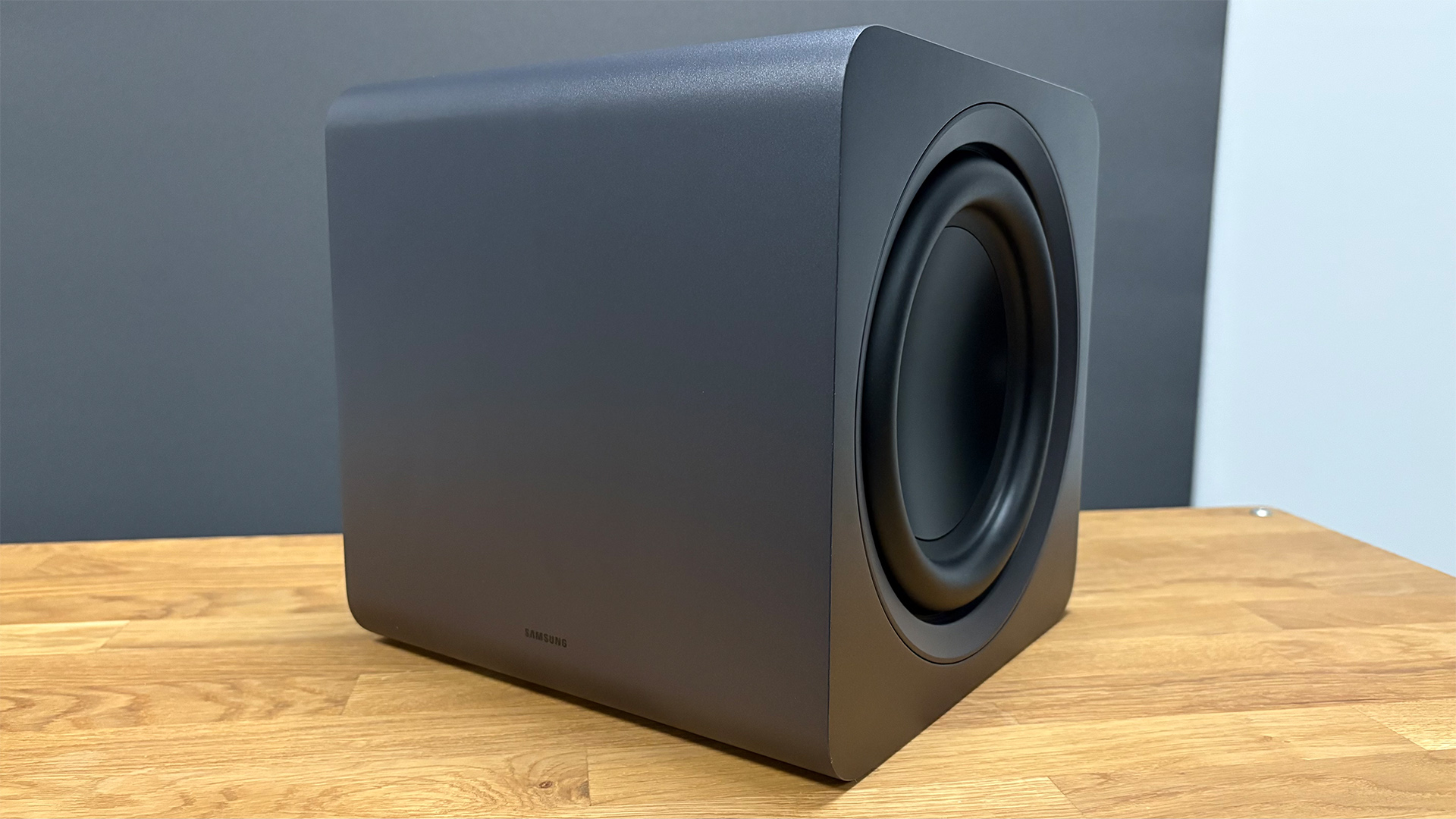
This is how to take a product that was already highly regarded and make it even better. Samsung’s upgrades didn’t appear to be that striking on paper, but the HW-Q990F’s enhancements need to be heard to be believed.
Once again, this system should be on the radar for anyone who wants a full Dolby Atmos experience without having to buy an AVR or finding the space to place countless speakers around your room.
The compact new cube subwoofer is easily the star of the show, offering a richer, more focused sound with greater tonal variation. Who knew shrinking down a core component of your system could deliver such huge performance gains?
SCORES
- Sound 5
- Features 5
- Build 4
Also Consider
Sonos Arc Ultra
While it doesn't include a subwoofer or pair of surround speakers, the Sonos Arc Ultra remains our top alternative thanks to its weighty, detailed and expansive cinematic sound. It might not rival the Q990F for bass, and its lack of HDMI passthrough connections will perturb those who cherish their HDMI 2.1 connections, but we can't argue with its detailed and tuneful performance.
Samsung HW-Q990D
Looking for the full package on a stricter budget? Last year's HW-Q990D might be better for you, as the Award-winning package put up a decent fight against its contemporary. Its bass isn't quite as varied or controlled, but it offers a spacious and engaging sound that isn't a mile off the latest model, as evidenced by the fact that we tested it side-by-side with the Q990F.
Sony Theatre Bar 9
Sony's current flagship sound scooped up an Award last year thanks to its excellent handling of Dolby Atmos height effects. Much like the Sonos, it does not come bundled with a subwoofer and surround speakers, but you can add those later if you so desire. The Sony is the ideal choice if you're looking for a clean and revealing-sounding 'bar, and it pairs well if you're already using a Sony TV.
FAQs
How much better is the HW-Q990F than the HW-Q990D
Samsung is one of the very few manufacturers to annually refresh its soundbars, so scepticism regarding how much it can improve its soundbars year-on-year is understandable. Obviously, the expectation to upgrade your soundbar yearly, or even every two years in the same way you would with a phone contract, for example, is ludicrous.
That being said, if you're choosing between the 2024 and 2025 models, then you should know that the latest version is the better sounding of the two. While the bar and surrounds are mostly similar, the redesigned subwoofer makes all the difference.
It underpins the audio performance with richer, more controlled bass that features greater tonal variation, allowing for a more dynamic and engaging performance when it comes to scenes with heavy low end effects.
When it comes to music, we found it to offer similar upgrades; providing more weight and variety to the low end which ties the system together nicely.
However, if you're looking to save some money, the HW-Q990D is still an excellent system with an engaging encompassing sound that's almost as good for a fair bit less.
Where should I place the subwoofer and surround speakers?
The beauty of having a wireless system is that you're afforded extra flexibility when it comes to placing the components; that and you don't have to trail cables around your living room.
Subwoofer placement, as always, is slightly more forgiving compared to the surround speakers. Stick it at the front of the room, within a reasonable vicinity to the left or right of the soundbar and ideally not directly in a corner; you should find that the subwoofer spreads bass effects around the room evenly in this configuration.
The surround speakers, on the other hand, require a bit more thought. Samsung says that they should be placed at a 135-150-degree angle behind the listening position for the best results, and yes, these speakers support wall-mounting if your couch is up against a wall.
Interestingly, Samsung does allow you to configure the system to work with the surround speakers placed up front with the soundbar; however, this won't provide the same surround sound effect, so we recommend placing the speakers behind you for the best results.
Do I get any bonus features if I have a Samsung TV?
Samsung TV users will likely be the first to gravitate towards the HW-Q990F. There are a few features that come with matching your soundbar to your TV, such as Samsung Q Symphony feature which allows the soundbar to sync with the TV's built-in speakers for a more expansive sound.
We find this feature to be a bit hit or miss, due to the tonal mismatch between the TV's speakers and the soundbar's drivers that often occurs.
On a more practical level, there is the benefit of the soundbar's settings being incorporated into the TV's menus, as well as the SmartThings app for anyone who relies on the software to control their smart home appliances; including but not limited to Samsung TVs, ovens and fridge-freezers. You can, of course, control the soundbar system with your TV's remote too.
MORE:
Check out our picks for the best Dolby Atmos soundbars
The best surround sound systems for anyone looking to upgrade from a soundbar
Best soundbars options for every need, recommended by our experts
Lewis Empson is a Senior Staff Writer on What Hi-Fi?. He was previously Gaming and Digital editor for Cardiff University's 'Quench Magazine', Lewis graduated in 2021 and has since worked on a selection of lifestyle magazines and regional newspapers. Outside of work, he enjoys gaming, gigs and regular cinema trips.
You must confirm your public display name before commenting
Please logout and then login again, you will then be prompted to enter your display name.
